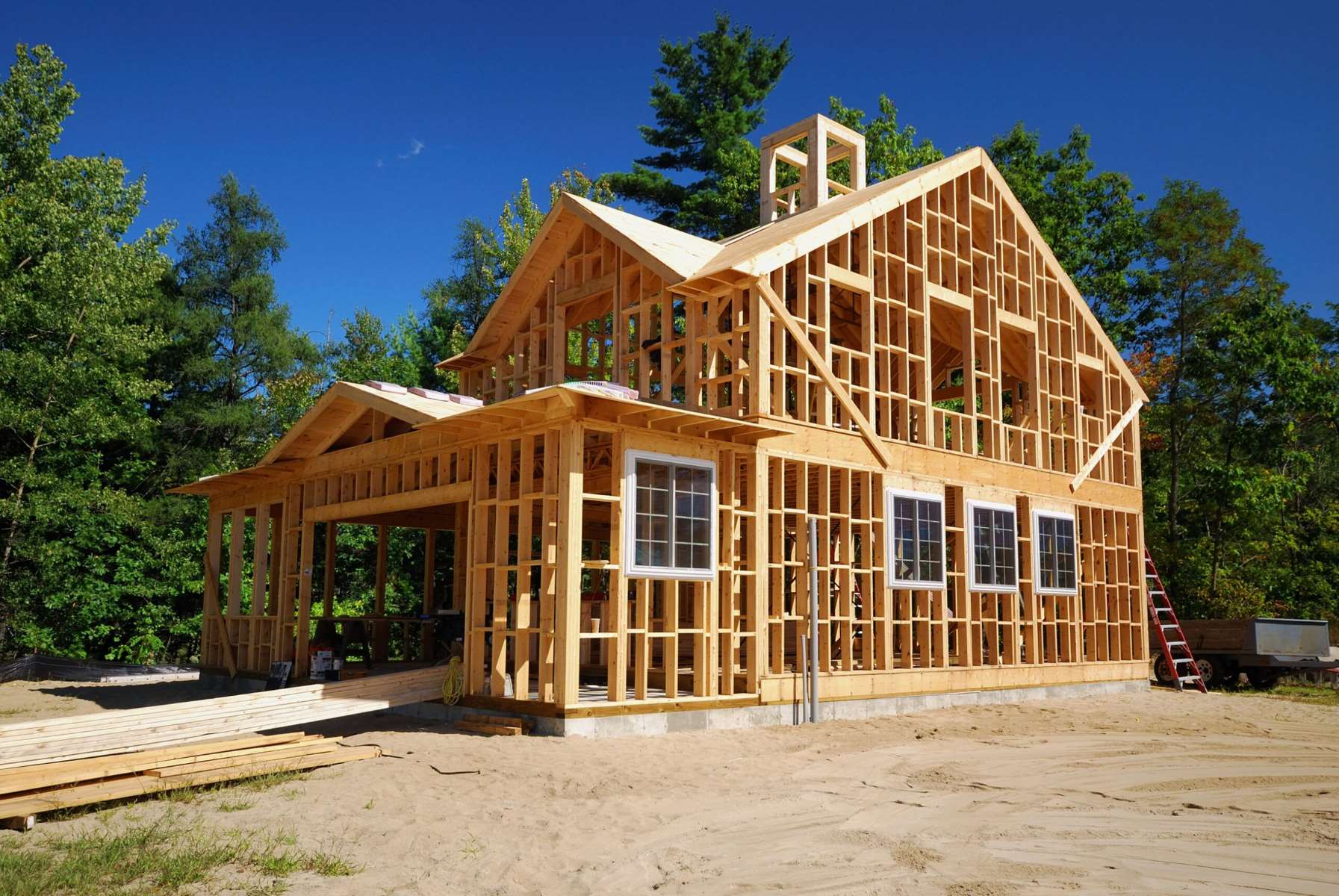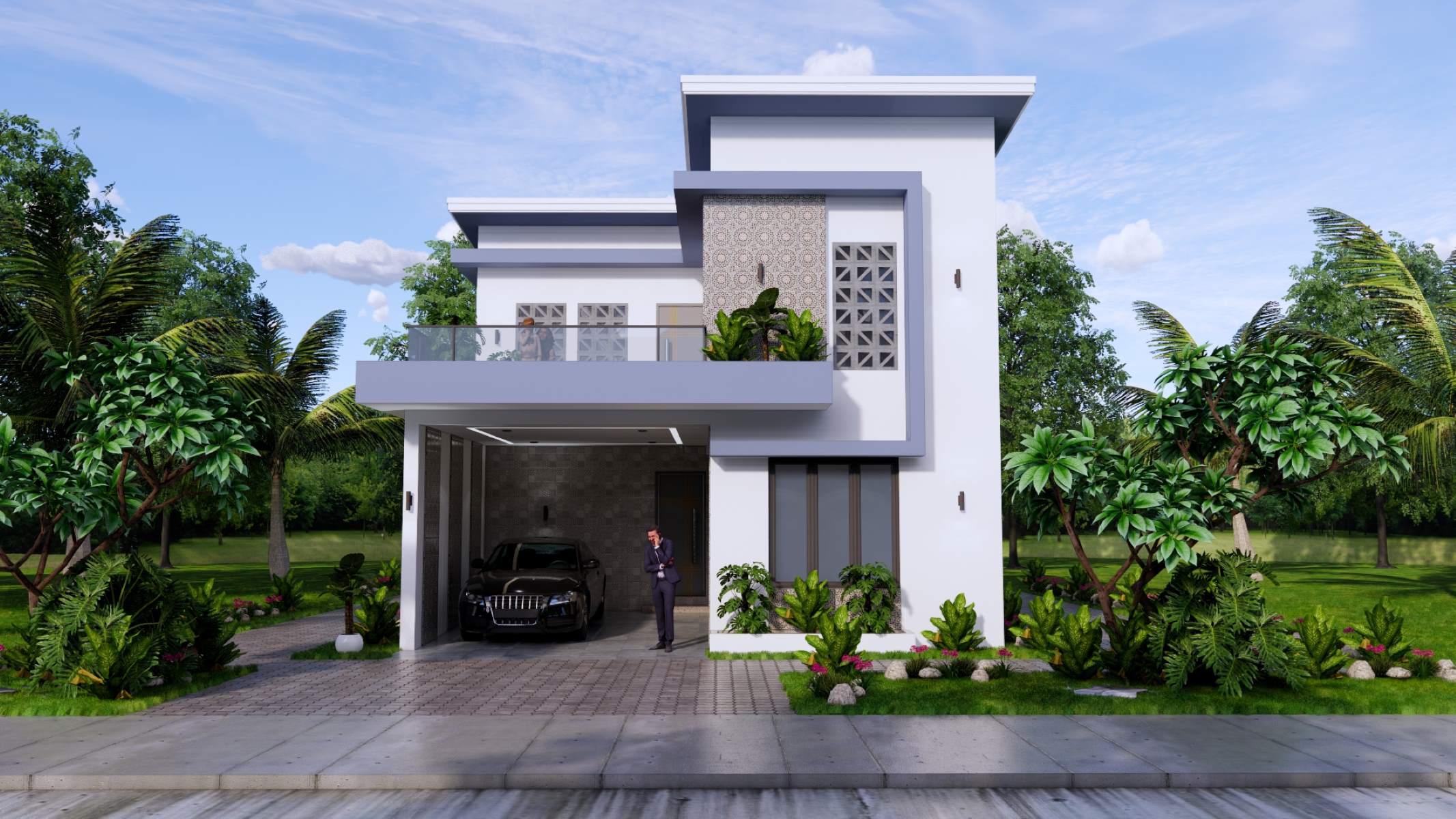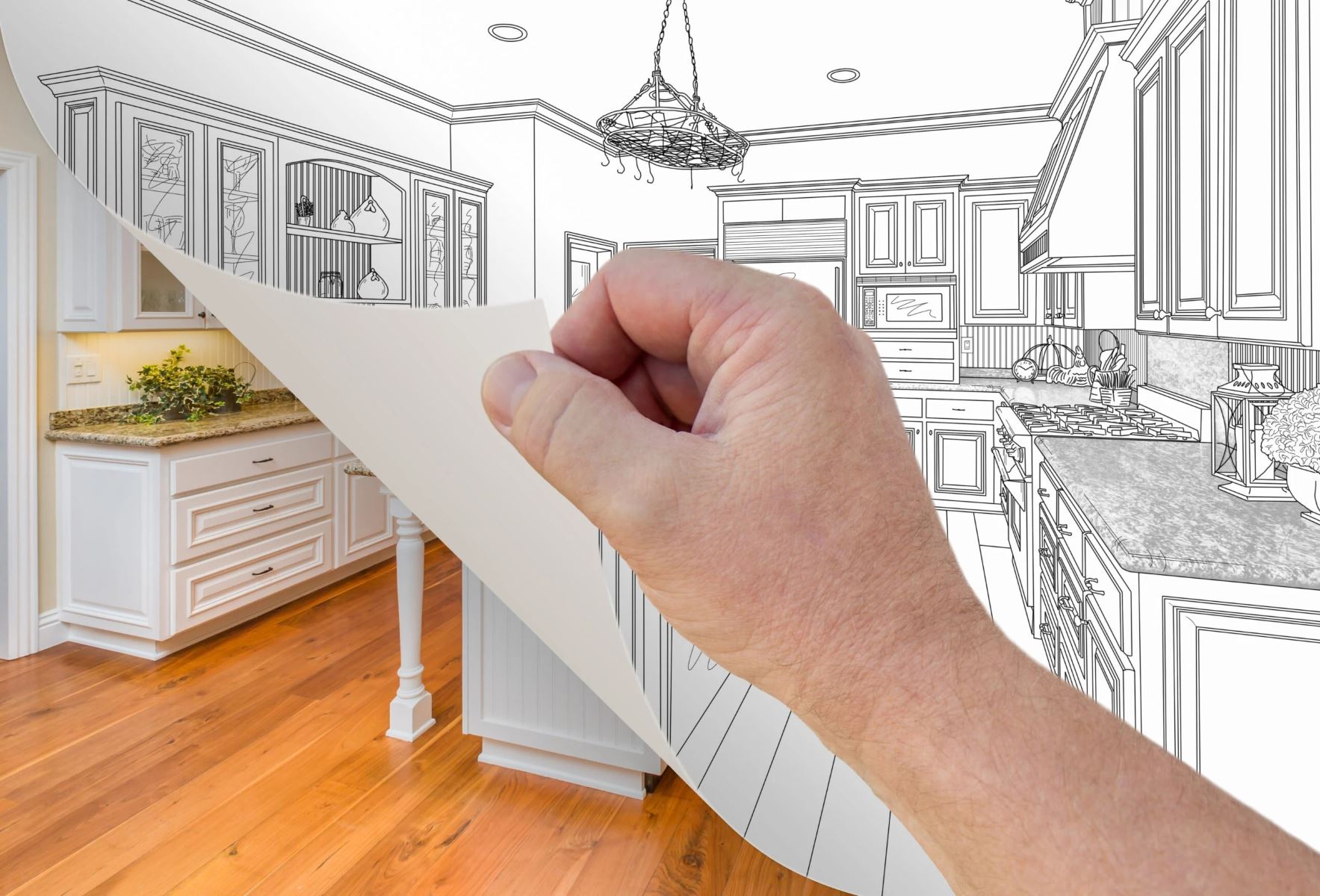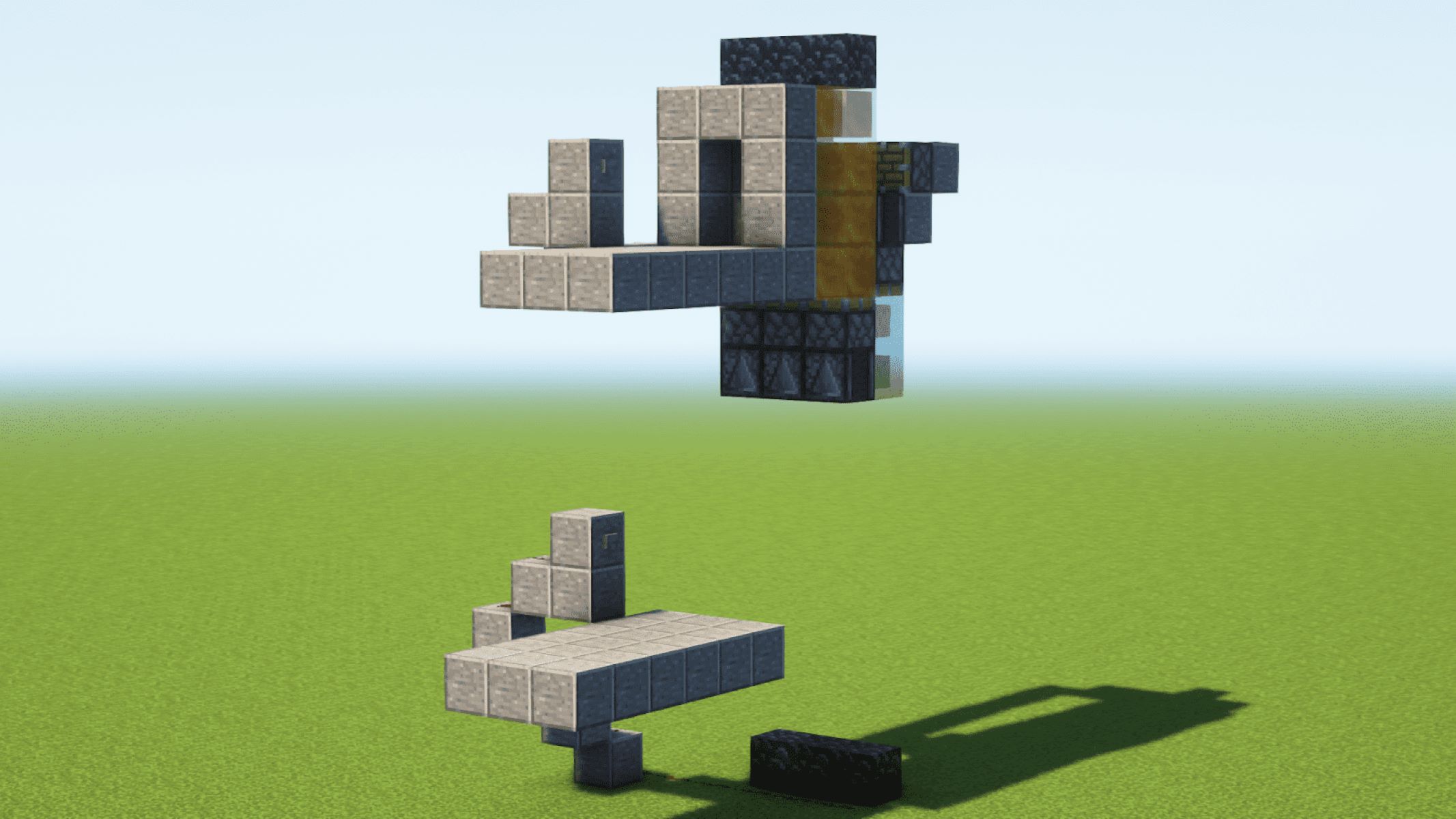Home>Real Estate>The Surprising Cost Of Building A House In Utah


Real Estate
The Surprising Cost Of Building A House In Utah
Published: February 8, 2024
Discover the unexpected expenses involved in building a house in Utah. Get insights on real estate costs and make informed decisions. Explore now!
(Many of the links in this article redirect to a specific reviewed product. Your purchase of these products through affiliate links helps to generate commission for Regretless.com, at no extra cost. Learn more)
Table of Contents
Introduction
Building a house is a significant milestone for many individuals and families. It represents the realization of a dream, the creation of a sanctuary, and the embodiment of personal style and comfort. However, the process of bringing this dream to life involves various costs that may not be immediately apparent. Understanding the comprehensive expenses associated with constructing a house is crucial for anyone considering this endeavor, especially in the picturesque state of Utah.
Utah, known for its stunning landscapes, vibrant communities, and thriving real estate market, offers an inviting backdrop for building a new home. However, the costs involved in this undertaking can be surprising, encompassing not only the obvious expenses such as materials and labor but also a myriad of other factors that can significantly impact the overall budget.
In this article, we will delve into the multifaceted costs of building a house in Utah, shedding light on the various elements that contribute to the overall expenditure. From land and site preparation to design and architectural expenses, from permitting and regulatory costs to hidden expenditures and unexpected financial outlays, we will explore the intricacies of each aspect. By gaining a comprehensive understanding of these expenses, prospective homeowners and real estate enthusiasts can make informed decisions and effectively plan for the financial investment required to bring their vision of a new home to fruition in the beautiful state of Utah.
Land and Site Preparation Costs
The initial phase of building a house in Utah involves acquiring suitable land and preparing the site for construction. Land prices in Utah can vary significantly based on location, size, and proximity to amenities and natural features. Factors such as the terrain, soil quality, and accessibility can also influence land prices. In urban areas, the cost of land tends to be higher due to the demand for prime locations and the availability of essential infrastructure.
Site preparation costs encompass a range of essential activities, including land clearing, excavation, grading, and utility connections. Land clearing involves the removal of trees, rocks, and debris from the building site, which can incur expenses based on the extent of the clearing required and the disposal of materials. Excavation, which involves digging and leveling the land to create a foundation for the house, is a crucial and cost-intensive aspect of site preparation. The topography and soil conditions of the land can impact the complexity and cost of excavation.
Moreover, grading the land to ensure proper drainage and stability is essential for the construction process. This involves reshaping the terrain to achieve the desired elevation and slope, which can involve machinery and skilled labor. Additionally, connecting the site to essential utilities such as water, electricity, and sewage systems necessitates careful planning and budgeting. These connections may involve trenching, piping, and coordination with utility providers, contributing to the overall site preparation costs.
In Utah, factors such as the region's climate, environmental regulations, and geological considerations can further influence land and site preparation expenses. For instance, areas prone to seismic activity may require additional measures to ensure structural integrity, adding to the overall costs. Furthermore, adhering to local building codes and environmental regulations is paramount, as failure to do so can result in costly delays and penalties.
Understanding the intricacies of land and site preparation costs is essential for prospective homeowners in Utah. By factoring in these expenses when budgeting for a new home, individuals can effectively plan for the initial stages of construction and mitigate potential financial surprises. Careful consideration of these costs ensures that the journey of building a house in Utah begins on a solid foundation, both figuratively and literally.
Construction Materials and Labor Costs
The procurement of construction materials and the hiring of skilled labor constitute substantial components of the overall cost of building a house in Utah. The quality, quantity, and sourcing of materials, as well as the expertise and efficiency of labor, significantly influence the financial outlay associated with construction.
Construction materials encompass a wide array of items, including lumber, concrete, steel, roofing materials, insulation, windows, doors, and finishing elements such as flooring and fixtures. In Utah, the availability and pricing of these materials can be influenced by factors such as seasonal fluctuations, market demand, and transportation costs. For instance, the cost of lumber may vary based on timber availability and processing capacities, while the prices of concrete and steel can be influenced by market dynamics and regional supply chains.
Furthermore, the quality and sustainability of materials can impact their cost, as eco-friendly and energy-efficient options may entail higher initial expenses but offer long-term benefits in terms of durability and environmental impact. Considering Utah's diverse climate and environmental considerations, selecting materials that are suitable for the region's specific conditions is crucial for ensuring the longevity and resilience of the constructed home.
Labor costs constitute another significant aspect of the construction budget. Skilled tradespeople, including carpenters, electricians, plumbers, and masons, play a pivotal role in bringing architectural plans to life. The expertise and efficiency of labor directly influence the timeline and quality of construction, thereby impacting the overall cost. In Utah, labor costs can be influenced by factors such as prevailing wage rates, unionized labor, and the availability of specialized trades.
Additionally, the coordination and management of labor, including scheduling, supervision, and adherence to safety regulations, contribute to the comprehensive labor expenses. Effective project management and communication among the construction team are essential for optimizing labor costs and ensuring the timely completion of the project.
Understanding the intricacies of construction materials and labor costs is essential for prospective homeowners in Utah. By carefully evaluating the options for materials, sourcing, and labor management, individuals can make informed decisions that align with their budget and vision for their new home. Moreover, leveraging sustainable and cost-effective solutions can contribute to the long-term value and efficiency of the constructed property, making the investment in construction materials and labor a strategic and rewarding endeavor.
Permitting and Regulatory Costs
Navigating the regulatory landscape and obtaining the necessary permits are integral aspects of building a house in Utah. The process of securing permits and complying with regulations involves a distinct set of costs that are essential for ensuring legal compliance and the smooth progression of the construction project.
In Utah, the permitting and regulatory costs encompass a range of expenses, including application fees, plan review charges, inspection fees, and compliance costs associated with adhering to building codes and zoning regulations. The initial step involves submitting permit applications to the relevant local authorities, which typically incurs application fees. These fees vary based on the scope of the construction project and are essential for initiating the review and approval process.
Plan review charges, another component of permitting costs, involve the assessment of architectural and engineering plans by regulatory agencies to ensure compliance with safety, structural, and environmental standards. These charges contribute to the thorough evaluation of construction plans and are essential for obtaining the necessary approvals to commence building.
Furthermore, inspection fees, incurred during various stages of construction, are essential for ensuring that the work meets regulatory standards and safety requirements. Inspections, conducted by building officials and inspectors, verify the adherence to building codes, structural integrity, and the implementation of essential systems such as plumbing, electrical, and fire safety measures.
In addition to these direct costs, there are indirect expenses associated with complying with zoning regulations, environmental impact assessments, and mitigation measures. Zoning regulations dictate the permitted land use, building setbacks, height restrictions, and other parameters that influence the design and construction of the house. Ensuring compliance with these regulations may involve additional expenses related to surveying, land-use studies, and legal consultations.
Moreover, environmental impact assessments, particularly in ecologically sensitive areas, may necessitate studies and measures to mitigate the project's impact on the natural surroundings. These assessments and mitigation measures contribute to the comprehensive regulatory costs and are essential for upholding environmental stewardship and sustainability principles.
Understanding and budgeting for permitting and regulatory costs is crucial for prospective homeowners in Utah. By factoring in these expenses, individuals can navigate the regulatory processes effectively, avoid potential delays and penalties, and ensure that the construction project aligns with legal and environmental standards. Proactive engagement with regulatory authorities, thorough planning, and compliance with regulations contribute to a seamless and compliant construction process, making the investment in permitting and regulatory costs a strategic and indispensable aspect of building a house in Utah.
Design and Architectural Costs
Design and architectural costs play a pivotal role in shaping the aesthetic, functional, and structural aspects of a house in Utah. The process of conceptualizing, refining, and realizing architectural plans involves a distinct set of expenses that are essential for translating the homeowner's vision into a tangible and harmonious living space.
The initial phase of design and architectural costs involves engaging professionals such as architects, draftspersons, and design consultants to conceptualize the layout, style, and structural elements of the house. Architects, renowned for their expertise in spatial design, aesthetics, and structural integrity, collaborate with homeowners to understand their preferences, lifestyle needs, and aspirations for the new home. This collaborative process forms the foundation for creating architectural plans that reflect the homeowner's individuality and functional requirements.
In Utah, the diverse architectural styles, ranging from modern and contemporary designs to traditional and rustic aesthetics, offer homeowners a rich tapestry of options to explore. The choice of architectural style, influenced by personal preferences, regional influences, and environmental considerations, contributes to the uniqueness and character of the envisioned home. The cost of engaging architectural professionals varies based on the complexity of the design, the level of customization, and the reputation of the design firm or individual architect.
Moreover, architectural costs encompass the development of detailed construction drawings, 3D visualizations, and material specifications that provide a comprehensive roadmap for the construction process. These technical documents, meticulously crafted by architects and design professionals, serve as the guiding framework for builders, tradespeople, and project managers, ensuring the accurate interpretation and execution of the design vision.
Furthermore, incorporating sustainable and energy-efficient design elements, such as passive solar features, natural ventilation systems, and eco-friendly materials, may entail additional expenses. However, the long-term benefits of reduced energy consumption, environmental stewardship, and enhanced living comfort make these investments in sustainable design a strategic and rewarding choice for homeowners in Utah.
Understanding the nuances of design and architectural costs is essential for prospective homeowners in Utah. By carefully considering the investment in architectural expertise, design refinement, and sustainable elements, individuals can realize a home that not only reflects their unique style but also embodies the principles of functionality, sustainability, and enduring aesthetic appeal. The collaboration between homeowners and architectural professionals forms the cornerstone of a successful and resonant design journey, culminating in the creation of a distinctive and harmonious living space in the picturesque landscapes of Utah.
Utilities and Infrastructure Costs
The integration of essential utilities and infrastructure is a fundamental aspect of building a house in Utah, encompassing a range of costs associated with connecting the property to vital services and ensuring the functionality and convenience of modern living. Utilities such as water, electricity, gas, and sewage systems, along with the development of access roads and driveways, form the backbone of a well-equipped and habitable residence in the dynamic landscapes of Utah.
In Utah, the costs related to utilities and infrastructure are influenced by factors such as the proximity to existing utility lines, the terrain of the building site, and the regulatory requirements for utility connections. Connecting the property to municipal water and sewage systems, or drilling a well and installing a septic system in rural areas, entails distinct expenses that are essential for ensuring access to clean water and efficient waste management.
Furthermore, the provision of electricity, including the installation of power lines, transformers, and electrical panels, constitutes a significant portion of the utilities budget. Factors such as the distance from existing power infrastructure, the power capacity required for the property, and the potential need for alternative energy solutions such as solar panels can impact the overall cost of electrical connections.
The integration of gas lines for heating and cooking, particularly in areas where natural gas is available, adds to the utilities expenditure. Additionally, the development of access roads, driveways, and pathways to the property, including grading, surfacing, and drainage considerations, contribute to the infrastructure costs. The topography of the land, the distance from public roads, and the environmental impact of access development are essential factors that influence these expenses.
Moreover, in the context of Utah's diverse climate and environmental considerations, incorporating sustainable and resilient infrastructure elements, such as rainwater harvesting systems, greywater recycling, and erosion control measures, may involve additional costs. These eco-conscious solutions contribute to the long-term sustainability and efficiency of the property, aligning with the principles of environmental stewardship and resource conservation.
Understanding and budgeting for utilities and infrastructure costs is crucial for prospective homeowners in Utah. By factoring in these expenses, individuals can ensure that their new home is seamlessly integrated with essential services, environmentally conscious infrastructure, and convenient access, reflecting a harmonious blend of modern comfort and responsible living in the captivating landscapes of Utah.
Hidden Costs and Unexpected Expenses
As individuals embark on the journey of building a house in Utah, it is essential to anticipate and prepare for hidden costs and unexpected expenses that may arise during the construction process. While meticulous planning and budgeting are integral to the initial stages of the project, unforeseen factors and unanticipated requirements can impact the overall financial outlay. Understanding and acknowledging these potential hidden costs is crucial for ensuring financial resilience and proactive management of the construction endeavor.
One of the primary sources of hidden costs stems from unforeseen site conditions. Despite thorough site assessments and surveys, unexpected challenges such as encountering rock formations, unstable soil conditions, or underground utility obstructions can lead to additional expenses. Addressing these site-specific complexities may require specialized equipment, expert consultations, and adjustments to the construction plans, contributing to unforeseen costs.
Moreover, changes in construction plans and scope, whether due to design refinements, material unavailability, or regulatory requirements, can lead to cost escalations. Alterations in architectural elements, structural modifications, or material substitutions may necessitate re-evaluating the budget and accommodating the financial implications of these changes. Additionally, delays in material deliveries, labor availability, or inclement weather can disrupt the construction timeline, leading to increased holding costs and temporary site management expenses.
Unforeseen regulatory requirements or compliance obligations, such as updated building codes, environmental assessments, or permit revisions, can introduce unexpected expenses. Adhering to evolving regulations and standards may involve engaging legal counsel, consulting with regulatory authorities, or implementing additional measures to ensure compliance, all of which contribute to the hidden costs of the construction project.
Furthermore, the procurement of specialized or custom materials, fixtures, or architectural elements, driven by the homeowner's evolving preferences or unique design aspirations, can lead to unanticipated expenses. The pursuit of personalized and distinctive features may entail higher costs or longer lead times, necessitating adjustments to the budget and construction schedule.
In the context of Utah's dynamic real estate market and construction industry, fluctuating material prices, labor wage variations, and supply chain disruptions can impact the overall project costs. Economic factors, market demands, and global events can influence the pricing and availability of construction materials, thereby introducing unforeseen financial considerations.
Anticipating and addressing these hidden costs and unexpected expenses requires a proactive and flexible approach to construction budgeting and project management. By establishing contingency funds, maintaining open communication with stakeholders, and engaging experienced professionals, individuals can navigate the complexities of building a house in Utah with financial foresight and resilience. Embracing the reality of hidden costs as an inherent aspect of construction allows homeowners to approach the project with adaptability and financial preparedness, ensuring that the journey of building a house in Utah unfolds with confidence and financial prudence.
Conclusion
Building a house in Utah encompasses a multifaceted journey that intertwines financial considerations, creative vision, and practical realities. As prospective homeowners navigate the intricacies of constructing a new residence in the picturesque landscapes of Utah, it becomes evident that the costs extend far beyond the visible aspects of materials and labor. The comprehensive understanding of the financial outlay associated with building a house in Utah is pivotal for individuals to embark on this endeavor with clarity, preparedness, and confidence.
From the initial stages of acquiring land and preparing the site to the integration of essential utilities and infrastructure, the costs involved in building a house in Utah reflect a harmonious blend of natural considerations, regulatory compliance, and modern living essentials. The nuances of land and site preparation costs underscore the significance of understanding the terrain, environmental factors, and regulatory requirements, laying the foundation for a resilient and well-prepared construction process.
The procurement of construction materials and the engagement of skilled labor represent not only the tangible elements of the construction budget but also the embodiment of quality, craftsmanship, and enduring value. The choices made in selecting materials and labor underscore the commitment to creating a home that not only meets functional needs but also embodies sustainability, efficiency, and aesthetic appeal.
The regulatory landscape and permitting costs, while often overlooked, form the backbone of a compliant and legally sound construction project. Navigating the intricacies of building codes, environmental regulations, and zoning requirements is essential for ensuring that the constructed home aligns with legal standards and environmental stewardship principles.
The collaboration between homeowners and architectural professionals forms the cornerstone of a resonant and distinctive design journey, culminating in the creation of a home that reflects individuality, functionality, and enduring aesthetic appeal.
Moreover, the anticipation and proactive management of hidden costs and unexpected expenses demonstrate the financial resilience and adaptability required for navigating the dynamic landscape of construction in Utah.
In conclusion, the surprising cost of building a house in Utah transcends mere financial figures; it embodies a holistic and transformative journey that culminates in the realization of a dream home. By embracing the comprehensive understanding of these costs, individuals embarking on the path of building a house in Utah can approach the endeavor with clarity, preparedness, and confidence, ensuring that the journey unfolds with resilience, creativity, and financial prudence.














